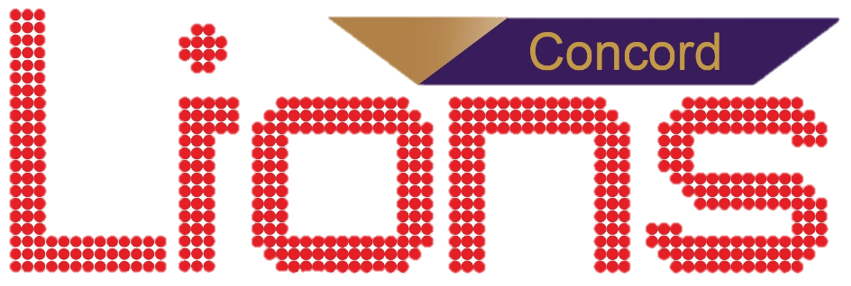Carrier Aggregation
Carrier aggregation (CA) is a fundamental technique in wireless communication that combines multiple frequency bands or carriers to transmit data simultaneously, thereby enhancing data speeds and network capacity. This process is crucial as available bandwidth is a scarce resource in wireless communication. By increasing the available bandwidth, CA improves network performance and user satisfaction.

In the context of CBRS applications, 5G enterprise network users are categorized into General Authorized Access (GAA) users and Priority Access License (PAL) users. GAA users obtain bandwidth usage rights at no cost but have lower priority within PAL frequency bands. PAL users, on the other hand, pay for priority rights and can utilize the PAL and GAA bands.
The maximum bandwidth available to PAL users through CBRS is 40 MHz, primarily attributable to the PAL auction. Leveraging LIONS’ n48 RUs, users with CA support can use 2 CCs to access a maximum of 40 MHz from the PAL channels in conjunction with up to 50 MHz from GAA channels. This flexible configuration facilitates expanded bandwidth utilization, resulting in enhanced data rates. LIONS’s n48 RUs can also support up to 100MHz aggregated bandwidth available for GAA users.

Carrier Aggregation
Carrier aggregation (CA) is a fundamental technique in wireless communication that combines multiple frequency bands or carriers to transmit data simultaneously, thereby enhancing data speeds and network capacity. This process is crucial as available bandwidth is a scarce resource in wireless communication. By increasing the available bandwidth, CA improves network performance and user satisfaction.

In the context of CBRS applications, 5G enterprise network users are categorized into General Authorized Access (GAA) users and Priority Access License (PAL) users. GAA users obtain bandwidth usage rights at no cost but have lower priority within PAL frequency bands. PAL users, on the other hand, pay for priority rights and can utilize the PAL and GAA bands.
The maximum bandwidth available to PAL users through CBRS is 40 MHz, primarily attributable to the PAL auction. Leveraging LIONS’ n48 RUs, users with CA support can use 2 CCs to access a maximum of 40 MHz from the PAL channels in conjunction with up to 50 MHz from GAA channels. This flexible configuration facilitates expanded bandwidth utilization, resulting in enhanced data rates. LIONS’s n48 RUs can also support up to 100MHz aggregated bandwidth available for GAA users.

LIONS’ RU and domain proxy system, in conjunction with CA-compatible CUDUs, provide CA capabilities to service providers. The domain proxy system acquires two available band slots from CBRS SAS, and the RU-CUDU chain integrates the bands to enhance the uplink and downlink throughput of users. For service providers with CBRS PAL licenses, CA offers access to increased bandwidth, ultimately improving user experience. This feature is a valuable proposition for service providers seeking to differentiate their services and enhance user satisfaction.

To illustrate the impact of CA, consider a scenario without CA where the bandwidth is 10 MHz, resulting in an expected data rate of 98/9 Mbps (Downlink/Uplink). However, with CA enabled, the bandwidth range expands to 20-50 MHz, leading to an expected data rate of 208/29-598/69 Mbps (Downlink/Uplink). In situations where the maximum bandwidth without CA is 40 MHz, the expected data rate stands at 500/60 Mbps (Downlink/Uplink). With the deployment of CA, this bandwidth spectrum increases to 50-80 MHz, resulting in an expected data rate ranging from 598/69-1,000/120 Mbps (Downlink/Uplink).

LIONS’ RU and domain proxy system, in conjunction with CA-compatible CUDUs, provide CA capabilities to service providers. The domain proxy system acquires two available band slots from CBRS SAS, and the RU-CUDU chain integrates the bands to enhance the uplink and downlink throughput of users. For service providers with CBRS PAL licenses, CA offers access to increased bandwidth, ultimately improving user experience. This feature is a valuable proposition for service providers seeking to differentiate their services and enhance user satisfaction.

To illustrate the impact of CA, consider a scenario without CA where the bandwidth is 10 MHz, resulting in an expected data rate of 98/9 Mbps (Downlink/Uplink). However, with CA enabled, the bandwidth range expands to 20-50 MHz, leading to an expected data rate of 208/29-98/69 Mbps (Downlink/Uplink). In situations where the maximum bandwidth without CA is 40 MHz, the expected data rate stands at 500/60 Mbps (Downlink/Uplink). With the deployment of CA, this bandwidth spectrum increases to 50-80 MHz, resulting in an expected data rate ranging from 598/69-1,000/120 Mbps (Downlink/Uplink).

